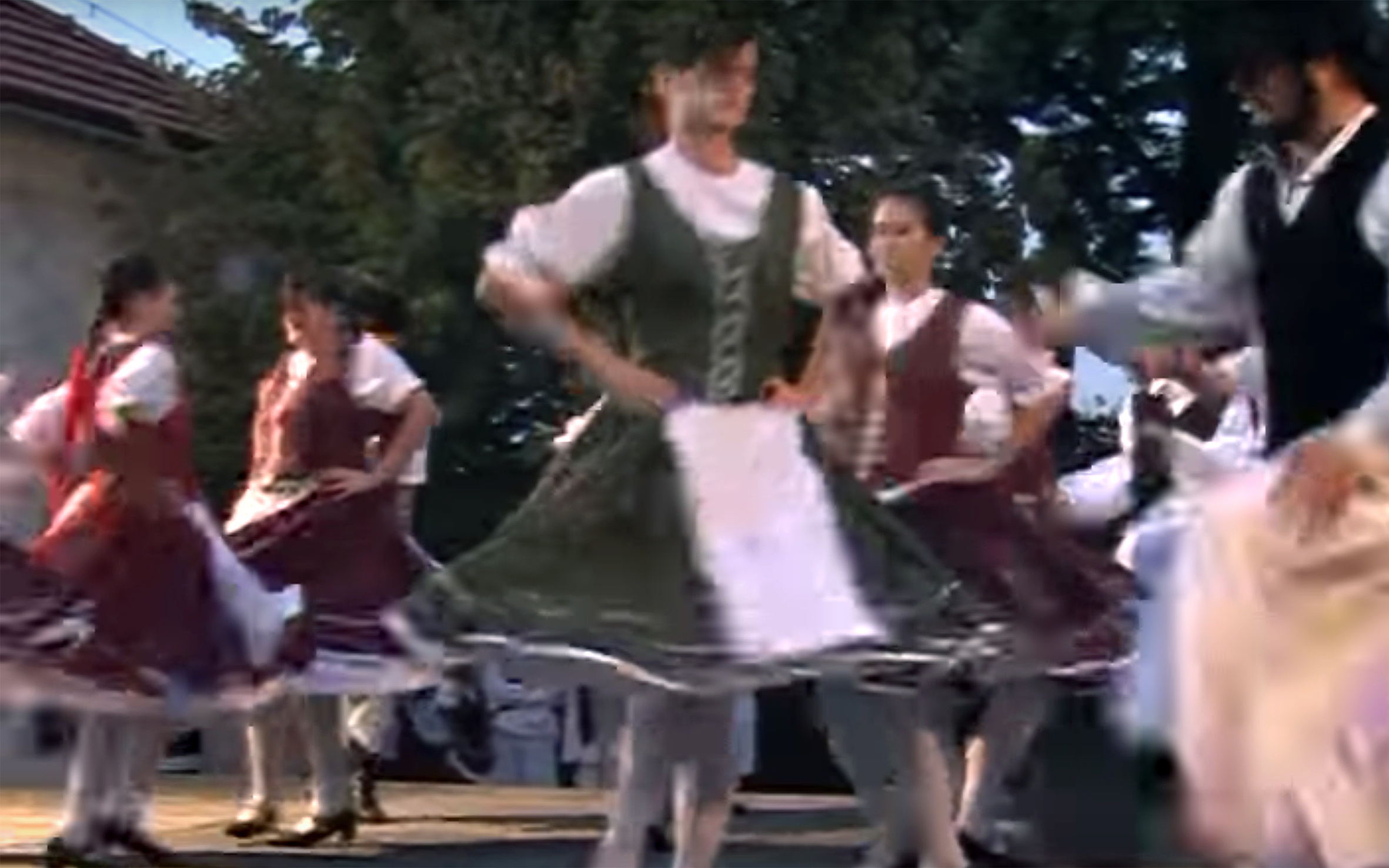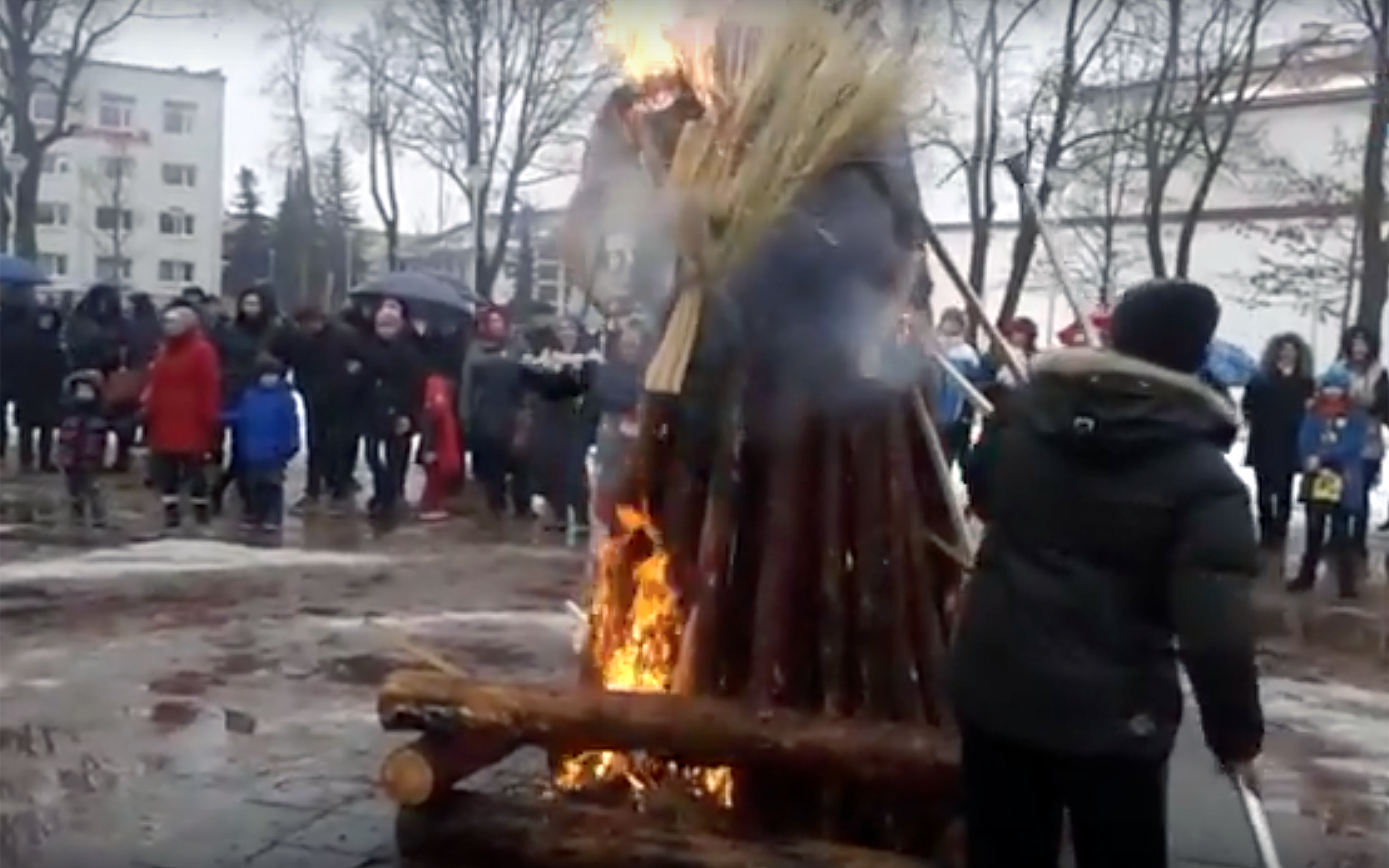927.Ugrós / Hungary
UGRÓS is an athletic Hungarian jumping dance for couples in 2/4 meter with an off-beat accent similar to polkas or hasaposerviko. Its origins lie in weapon dances from the Middle Ages. Dunántúli Ugrós is a couple folk dance from Transdanubia (Dunántúl in Hungarian), the western part of Hungary.
928.Ula-Ula / Tahiti
ULA-ULA is a dance from Tahiti. Couples dance separated from each other to the rhythm of the lively corrido, undulating their hips softly from side to side, and resting their feet alternatively on the heel and the tip of the toes. The women make graceful arm movements, waving them from one side to the other in a very harmonious manner, and imitating the act of combing their hair with one hand and looking themselves in an invisible mirror with the other. All of this is executed with a suggestive and captivating feminine grace. The dancing is usually alternated with figures where the dancers bend their legs until the heels almost touch their backside in a crouching position, and then rise again, constantly moving in a rhythmical manner.
929.Umhlanga reed dance / Swaziland
UMHLANGA REED DANCE is an annual eight-day event in Swaziland. Tens of thousands of unmarried and childless Swazi girls and women travel from the various chiefdoms to the Ludzidzini Royal Village. The maidens gather reeds from selected areas to honour the Queen Mother. It is from this custom that the ceremony derived its name. The maidens dress in short beaded skirts, colourful sashes, ankles, and bracelets. The royal princesses wear red feathers in their hair and lead the maidens to perform traditional dances before their Majesties, i.e. the climax of the event.
930.Umxhentso / South Africa
UMXHENTSO is a traditional dance of the Xhosa people in South Africa. It is performed mostly by traditional healers, who wear beaded clothes during the performance and usually paint themselves beforehand. Umxhentso has always been a source of pride to the Xhosas as they use this type of dancing in their celebrations. There are different types of Umxhentso: Umngqungqo—a highly dignified dance, slow, and accompanied by low-pitched music and clapping, performed by old women in ritual ceremonies; Umdudo—performed in weddings, often accompanied by umbolorho; Ukuxhentsa— performed by Sangoma healers during their ceremonies, and by young girls during festivals and traditional ceremonies; Umguyo—performed by young boys before they depart for their initiation, danced as a symbol of transition from boyhood to manhood.
931.UNDEFINED DANCE / Global
UNDEFINED DANCE is a non-specific dance, usually a mash-up of various dance styles and self-invented improvisation based dance movements.
932.Urban Dance / Global
URBAN DANCE is a style of dance, community, and lifestyle revolving around choreographed pieces and performances by a dancer or groups of dancers. Choreography is influenced by several different dance styles, but is ultimately based on the choreographer’s own interpretation of the music. A big part of the modern Urban Dance culture stemmed from collegiate dance teams and competitions.
933.Ussua / Africa
ÚSSUA is a traditional dance and rhythm from São Tomé and Príncipe. It is a dance of Portugese origin, which was later adapted by the San Tomean people. Considered a ballroom dance, it is extremely formal, reflected both in the dancers’ costumes and in the steps and gestures that are full of bows. It is performed through rhythmic movements and pleasant rhythms, through an interplay between men and women to the sound of a horn made of wood or animal horns. Today it is danced at various events and performances.
934.Üveges / Hungary
ÜVEGES is a traditional Hungarian bottle dance. Especially at weddings, it is often performed by the cooks.
935.UZBEK DANCE / Uzbekistan
UZBEK DANCE is an umbrella term for dances originating from Uzbekistan. Uzbek dancing is very expressive and involves complicated hand gestures and animated facial expressions. It has a one-of-a-kind repertoire of movements, each with its own special meaning. There are three main schools of classic traditional Uzbek dance: Fergana—characterized by smooth movements, light sliding steps and expressiveness of gestures; Bukhara— involving sharp gestures, fast spins, backbends, and quick drops to the floor; and Khorezm—characterized by original and distinctive motions. Uzbek dancing traditions include also various folk dances from different regions in the country performed on weddings and family holidays, rural and urban events.
936.Užgavėnės danceS / Lithuania
UŽGAVĖNĖS DANCES are dances performed during the Lithuanian festival called Užgave˙ne˙s that takes place during the seventh week before Easter (Ash Wednesday). Its name means “the time before Lent”. The celebration corresponds with Roman Catholic holiday traditions in other parts of the world, such as Mardi Gras, Shrove Tuesday and Carnaval. Užgave˙ne˙s begins on the night before Ash Wednesday, when an effigy of winter is burnt. A major element of the holiday, meant to symbolize the defeat of winter in the Northern Hemisphere, is a staged battle between “Lašininis” personifying winter and “Kanapinis” personifying spring. Devils, witches, goats, the grim reaper, and other joyful and frightening characters appear in costumes during the celebrations. The participants and masqueraders dance and eat pancakes, the traditional dish of the holiday.










